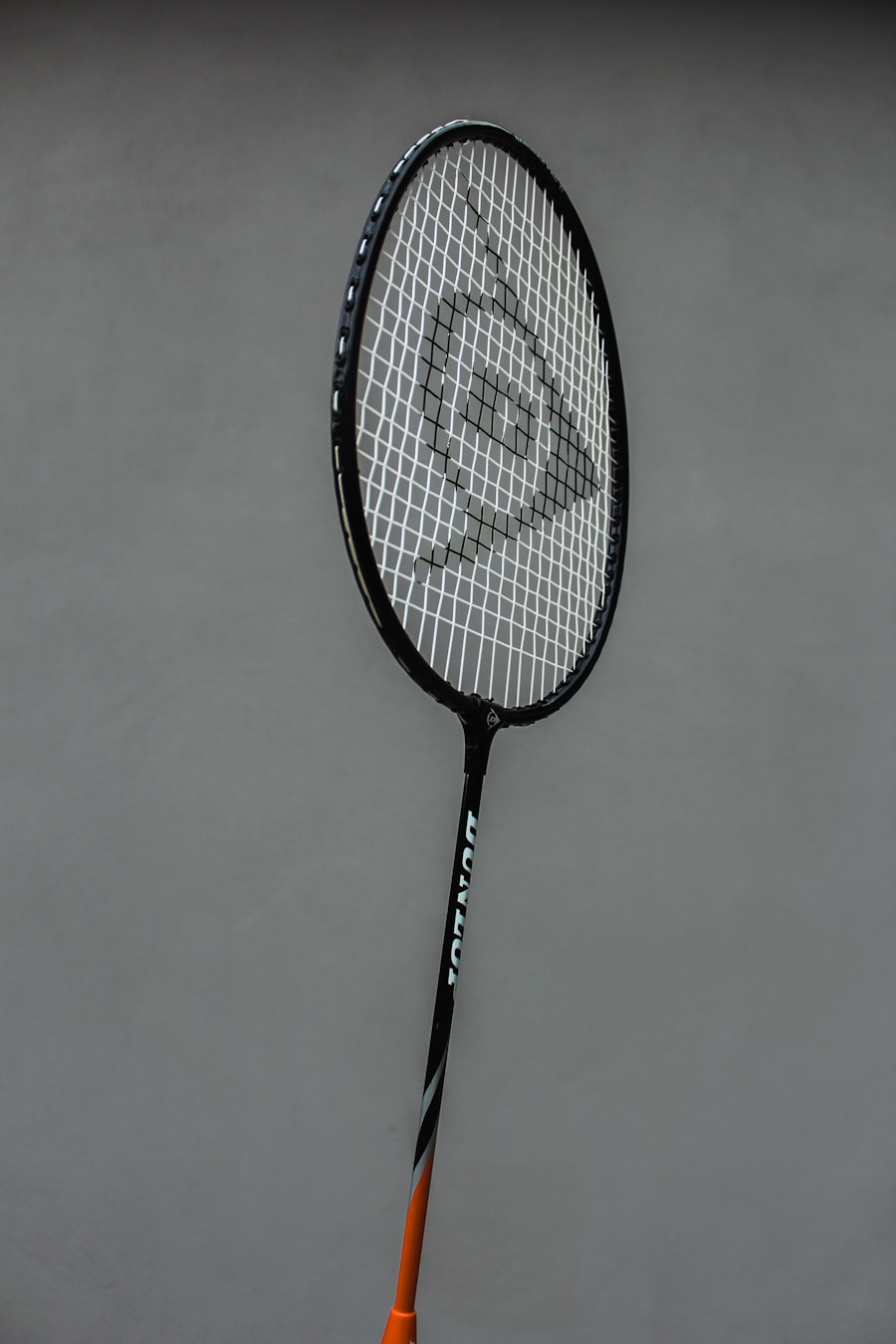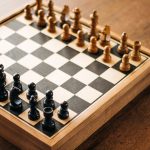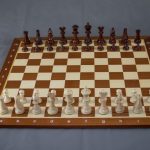Download links
How to install Mastering the Art of Badminton: Tips for Success APK?
1. Tap the downloaded Mastering the Art of Badminton: Tips for Success APK file.
2. Touch install.
3. Follow the steps on the screen.
Description
Badminton is a fast-paced racquet sport that has gained immense popularity worldwide, characterized by its unique blend of agility, strategy, and precision. Originating from the ancient game of battledore and shuttlecock, badminton has evolved into a competitive sport governed by the Badminton World Federation (BWF). The game is played either in singles or doubles format, with players using racquets to hit a shuttlecock over a net.
The objective is to score points by landing the shuttlecock in the opponent’s court while preventing them from doing the same. The scoring system typically follows a rally point format, where points can be won by either side regardless of who served.
A standard badminton court measures 13.4 meters long and 6.1 meters wide for doubles play, while the width narrows to 5.18 meters for singles matches. The net height is set at 1.55 meters at the center, creating a challenging barrier that players must navigate. The shuttlecock itself is a feathered projectile, traditionally made from goose feathers, which adds to the game’s complexity due to its unique flight characteristics.
Players must develop an acute sense of timing and spatial awareness to effectively engage with the shuttlecock, making badminton not only a test of physical prowess but also of mental acuity.
Key Takeaways
- Badminton is a racket sport played with a shuttlecock, and the objective is to hit it over the net and into the opponent’s court.
- Essential skills and techniques in badminton include grip, stance, and swing, as well as mastering different types of shots such as the clear, drop shot, and smash.
- Improving footwork and movement on the court is crucial for success in badminton, and players should focus on agility, speed, and balance.
- Mastering different types of shots in badminton, such as the clear, drop shot, and smash, requires practice and precision to outmaneuver opponents.
- Strategies for singles and doubles play in badminton involve understanding court positioning, communication with partners, and adapting to different playing styles. Mental and physical preparation are also key for peak performance in badminton, including maintaining focus, staying fit, and managing stress.
Developing Essential Skills and Techniques
To excel in badminton, players must cultivate a range of fundamental skills and techniques that form the backbone of their gameplay. One of the most critical skills is the grip, which influences how effectively a player can control their racquet. The basic grips include the forehand grip, used for most shots, and the backhand grip, essential for returning shots from the opposite side of the body.
Mastering these grips allows players to execute various strokes with precision and power. Additionally, players should practice transitioning between grips seamlessly during play, as this adaptability can significantly enhance their performance. Footwork is another essential skill that underpins effective play in badminton.
Good footwork enables players to position themselves optimally for each shot, ensuring they can respond quickly to their opponent’s actions. Players should focus on developing a strong base with their feet shoulder-width apart and practice moving in all directions—forward, backward, and laterally—while maintaining balance. Drills that emphasize agility and speed can help improve footwork, such as ladder drills or cone exercises that require quick changes in direction.
By honing these foundational skills, players can create a solid platform from which to build more advanced techniques.
Improving Footwork and Movement on the Court

Footwork in badminton is not merely about speed; it encompasses balance, coordination, and anticipation. Effective footwork allows players to reach the shuttlecock in optimal positions, enabling them to execute shots with greater accuracy and power. One of the key components of good footwork is the split step—a small jump performed just before an opponent strikes the shuttlecock.
This movement prepares players to move quickly in any direction, enhancing their reaction time and positioning on the court. Incorporating specific drills into training routines can significantly improve footwork. For instance, shadow badminton involves practicing footwork patterns without hitting a shuttlecock, allowing players to focus solely on their movement mechanics.
Players can also engage in multi-shuttle drills where they must retrieve multiple shuttles placed around the court, forcing them to move quickly and efficiently. Additionally, practicing lunges and quick sprints can help develop explosive movement capabilities, which are crucial during intense rallies. By prioritizing footwork training, players can enhance their overall agility and responsiveness on the court.
Mastering Different Types of Shots
| Shot Type | Accuracy (%) | Success Rate (%) |
|---|---|---|
| Jump Shot | 45 | 60 |
| Layup | 70 | 80 |
| Hook Shot | 55 | 70 |
| Three-Point Shot | 40 | 50 |
A comprehensive understanding of various badminton shots is essential for any player aiming to compete at higher levels. The fundamental shots include clears, drops, smashes, and drives, each serving a distinct purpose within a match context. The clear shot is typically used to send the shuttlecock high and deep into the opponent’s court, allowing players to regain their position or create space for subsequent shots.
Executing a clear effectively requires a strong overhead motion and precise timing to ensure the shuttle travels at an optimal angle. The drop shot is another vital technique that can catch opponents off guard. It involves hitting the shuttlecock softly so that it barely crosses the net and lands close to it on the opponent’s side.
This shot requires finesse and control, as it aims to exploit gaps in an opponent’s positioning. Conversely, the smash is one of the most aggressive shots in badminton; it involves hitting the shuttlecock forcefully downwards into the opponent’s court. Mastering this shot requires not only strength but also excellent timing and positioning to ensure maximum impact.
Drives are flat shots that travel parallel to the ground, often used in fast-paced exchanges during rallies. They can be executed from both forehand and backhand positions and are effective for maintaining pressure on opponents. Players should practice these shots in various scenarios to develop versatility and adaptability during matches.
Strategies for Singles and Doubles Play
The strategic approach in badminton varies significantly between singles and doubles play due to differences in court coverage and player dynamics. In singles matches, players must rely heavily on their ability to control the pace of the game while maintaining stamina throughout longer rallies. A common strategy involves using a combination of clears and drop shots to manipulate an opponent’s positioning, forcing them to move around the court extensively.
By alternating between deep clears that push opponents back and deceptive drops that draw them forward, players can create openings for powerful smashes or drives. In contrast, doubles play introduces an element of teamwork that necessitates different strategies. Communication between partners is paramount; players must coordinate their movements and shot selections to cover the court effectively.
A common tactic in doubles is to adopt an attacking formation where one player takes on a more aggressive role at the net while the other covers the backcourt. This dynamic allows for quick exchanges and opportunities to intercept weak returns from opponents. Additionally, employing formations such as side-by-side or front-and-back can help teams adapt their strategies based on their opponents’ strengths and weaknesses.
Understanding when to switch roles during play is also crucial in doubles strategy. For instance, if one player is positioned at the net and anticipates a weak return from opponents, they may signal their partner to move forward as well, creating pressure on the opposing team. Practicing these strategies during training sessions can help teams develop chemistry and improve their overall effectiveness on the court.
Mental and Physical Preparation for Peak Performance

Mental Preparation for Success
Players must develop focus, confidence, and a positive mindset to perform at their best. Techniques such as visualization, where players mentally rehearse their performance, can enhance confidence levels before competitions.
Physical Conditioning for Badminton
Physical preparation encompasses various elements tailored specifically for badminton players. Strength training should focus on building core stability and leg strength, as these areas are vital for generating power during shots and maintaining balance during movement. Endurance training through activities like interval running or cycling can improve cardiovascular fitness, allowing players to sustain high energy levels throughout matches.
Comprehensive Preparation for Peak Performance
In addition to physical conditioning, proper nutrition plays a significant role in preparation. Athletes should focus on balanced diets rich in carbohydrates for energy, proteins for muscle repair, and hydration strategies to maintain optimal performance levels during matches. By integrating mental strategies with physical conditioning, badminton players can create a holistic approach to preparation that maximizes their potential on the court. This comprehensive preparation not only enhances performance but also fosters a deeper understanding of one’s capabilities as an athlete in this dynamic sport.
If you’re looking to maximize your game in badminton, you should check out the article Maximize Your Game with Taya777 Online Sports. This article provides valuable tips and strategies to help you improve your skills and performance on the court. Additionally, you may also be interested in reading Maximizing Your Game with Taya777 Online Sports for even more insights and advice on how to take your badminton game to the next level.
FAQs
What is badminton?
Badminton is a racquet sport played by either two opposing players (singles) or two opposing pairs (doubles), who take positions on opposite halves of a rectangular court divided by a net.
What equipment is used in badminton?
The primary equipment used in badminton includes a shuttlecock (also known as a birdie), badminton racquets, and a net. Players also wear appropriate footwear for the sport.
What are the basic rules of badminton?
The basic rules of badminton include serving diagonally, scoring points by landing the shuttlecock within the opponent’s court, and winning a match by winning two out of three games.
What are the health benefits of playing badminton?
Playing badminton can provide various health benefits, including improved cardiovascular fitness, agility, flexibility, and hand-eye coordination. It also helps in burning calories and promoting overall physical well-being.
What are the different types of badminton shots?
Some of the different types of badminton shots include the clear, drop shot, smash, drive, and the backhand shot. Each shot has its own specific technique and purpose during a game.
What are the different types of badminton tournaments?
There are various types of badminton tournaments, including local, national, and international competitions. The most prestigious international tournaments include the All England Open, BWF World Championships, and the Olympic Games.





